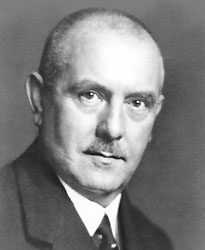Richard Schmitz

Personalia
Born:
Died:
Profession:
Persecution:
Imprisonment 12.03.1938 - 02.04.1938,
Dachau concentration camp 02.04.1938 - 27.09.1939,
Flossenbürg concentration camp 27.09.1939 - 02.03.1940,
Dachau concentration camp 02.03.1940 - 24.04.1945,
Reichenau labor-education camp 24.04.1945 - 04.05.1945
Memberships
Curriculum Vitae
Born in Moravia, Richard Schmitz attended the Elisabethgymnasium in Vienna 5. In the winter semester of 1902/03, he was one of the founders of the secondary school fraternity Herulia Wien. After graduating from high school in 1905, he began studying law at the University of Vienna, but did not complete it. In the same year that he began his studies - 1905 - he joined the Norica student fraternity. After his first editorial work as a secondary school student, Richard Schmitz writes as a student for Christian Social papers such as "Christlichsoziale Arbeiterzeitung", "Christlicher Gewerkschafter" and "Der Bäckereiarbeiter". In 1908, he joined the "Tiroler Anzeiger" in Innsbruck as editor-in-chief. In 1909/1910 he serves as a one-year volunteer. In 1910, he became economics editor of the "Reichspost". From 1911 to 1938, he was director of the "Volksbund der Katholiken Österreichs".
During the First World War from 1914 to 1918, he did his military service in Serbia, in the Carpathians, on the Russian front and finally on the plateau of the Seven Municipalities (Italy) - ultimately as a first lieutenant. In December 1918-1923, he was elected to the Vienna City Council and in October 1920-1934 to the National Council.
As a close follower of Dr. Ignaz Seipel (1876-1932), he became Federal Minister for Social Administration in the first three governments formed by Ignaz Seipel (1922-1924) and Federal Minister for Education in two further Seipel governments (1926-1929). His successes include the laws on the secondary school system and the secondary school, the establishment of the Max Reinhardt Seminar in Vienna and a secondary school in Horn. From September to December 1930 he was Vice-Chancellor and Federal Minister for Social Administration in the Carl Vaugoin government and from February to July 1934 Federal Minister without portfolio. From 1931, he represented the Austrian Christian Socials at the "International Conference of Christian People's Parties" in Paris. Following the dismissal of the democratically elected Mayor of Vienna, Karl Seitz, Richard Schmitz took on the role of Federal Commissioner and, from April 6, 1934 to March 11, 1938, the role of Mayor of Vienna. As mayor, he realized major construction projects, such as the Vienna Höhenstrasse, with the aim of "productive unemployment care". In 1938, he suggested arming the Social Democratic workers to fend off the National Socialists.
On 11.3.1938, Richard Schmitz refused to voluntarily hand over the position of mayor to the National Socialists and was placed under house arrest on 12.3.1938 and subsequently sent to the prison (Vienna 9). On April 2, 1938, he arrives at Dachau concentration camp after suffering severe abuse during the journey on the so-called "Prominent Transport", where he remains - with an interruption from September 27, 1939 to March 2, 1940 in Flossenbürg concentration camp - until April 1945. From December 1, 1938, he spent five months in solitary confinement and dark detention in the "Kommandatur-Arrest" ("bunker") because he refused to make a declaration of loyalty to the Nazi regime.
From April 24, 1945, Richard Schmitz, like the other prisoners, was released.1945, Richard Schmitz, the family of former Federal Chancellor Kurt von Schuschnigg and prisoners from 22 European nations were taken to Villabassa (South Tyrol) by the SS under the command of SS-Obersturmführer Edgar Stiller and SS-Untersturmführer Bader, who were ordered to liquidate all prisoners in case of doubt. In Villabassa, a Wehrmacht company under the command of Captain Wichard von Alvensleben (1902-1982) disarmed the SS escort team. The concentration camp prisoners are housed in the hotel on Lake Braies, where they are finally liberated by the US Army on May 4, 1945. Richard Schmitz was taken to Verona by the US Army on May 10, 1945, lived in Anacapri from May 11 to August 28, 1945 and in Rome from August 28, 1945 to January 1946. Only then was he able to return to Vienna via Innsbruck.
Places
Persecution:
Residence:
Citations
Krause, Peter/Reinelt, Herbert/Schmitt, Helmut (2020): Farbe tragen, Farbe bekennen. Katholische Korporierte in Widerstand und Verfolgung. Teil 2. Kuhl, Manfred (ÖVfStG, Wien) S. 305/306.; Photo: ÖCV
